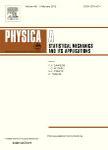版权所有:内蒙古大学图书馆 技术提供:维普资讯• 智图
内蒙古自治区呼和浩特市赛罕区大学西街235号 邮编: 010021

作者机构:Hong Kong Univ Sci & Technol Dept Math Kowloon Hong Kong Peoples R China NYU Courant Inst Math Sci New York NY 10012 USA Princeton Univ Program Appl & Computat Math Princeton NJ 08544 USA Princeton Univ Dept Math Princeton NJ 08544 USA Princeton Univ PACM Princeton NJ 08544 USA Hong Kong Univ Sci & Technol Dept Phys Kowloon Hong Kong Peoples R China
出 版 物:《PHYSICA A-STATISTICAL MECHANICS AND ITS APPLICATIONS》 (物理学A辑:统计力学及其应用)
年 卷 期:2007年第379卷第2期
页 面:491-502页
核心收录:
基 金:RGC, (602805, 602904) National Science Foundation, NSF, (CA04/05, DMS-0604382, HKUST6073/02P) U.S. Department of Energy, USDOE, (DE-FG02-03ER25587)
主 题:string method barrier tunneling rate of decay quantum metastability
摘 要:We generalize the string method, originally designed for the study of thermally activated rare events, to the calculation of quantum tunneling rates. This generalization is based on the formal analogy between quantum mechanics and statistical mechanics in the path-integral formalism. The quantum string method first locates the minimal action path (MAP), which is a smooth curve connecting two minima of the imaginary-time action in the space of imaginary-time trajectories. From the MAP, the saddle point of the action (called the bounce) associated with the exponential factor for barrier tunneling probability is obtained and the pre-exponential factor (the ratio of determinants) for the tunneling rate evaluated using stochastic simulation. The quantum string method is implemented to calculate the bounce and rate of tunneling for the Mueller potential in two dimensions. The quantum problem is much more difficult than the thermally activated barrier crossing problem for the same potential. The model calculations show the string method to be an efficient numerical tool for the study of barrier tunneling in higher dimension, from the determination of the saddle point to the computation of the pre-exponential factor. (C) 2007 Elsevier B.V. All rights reserved.